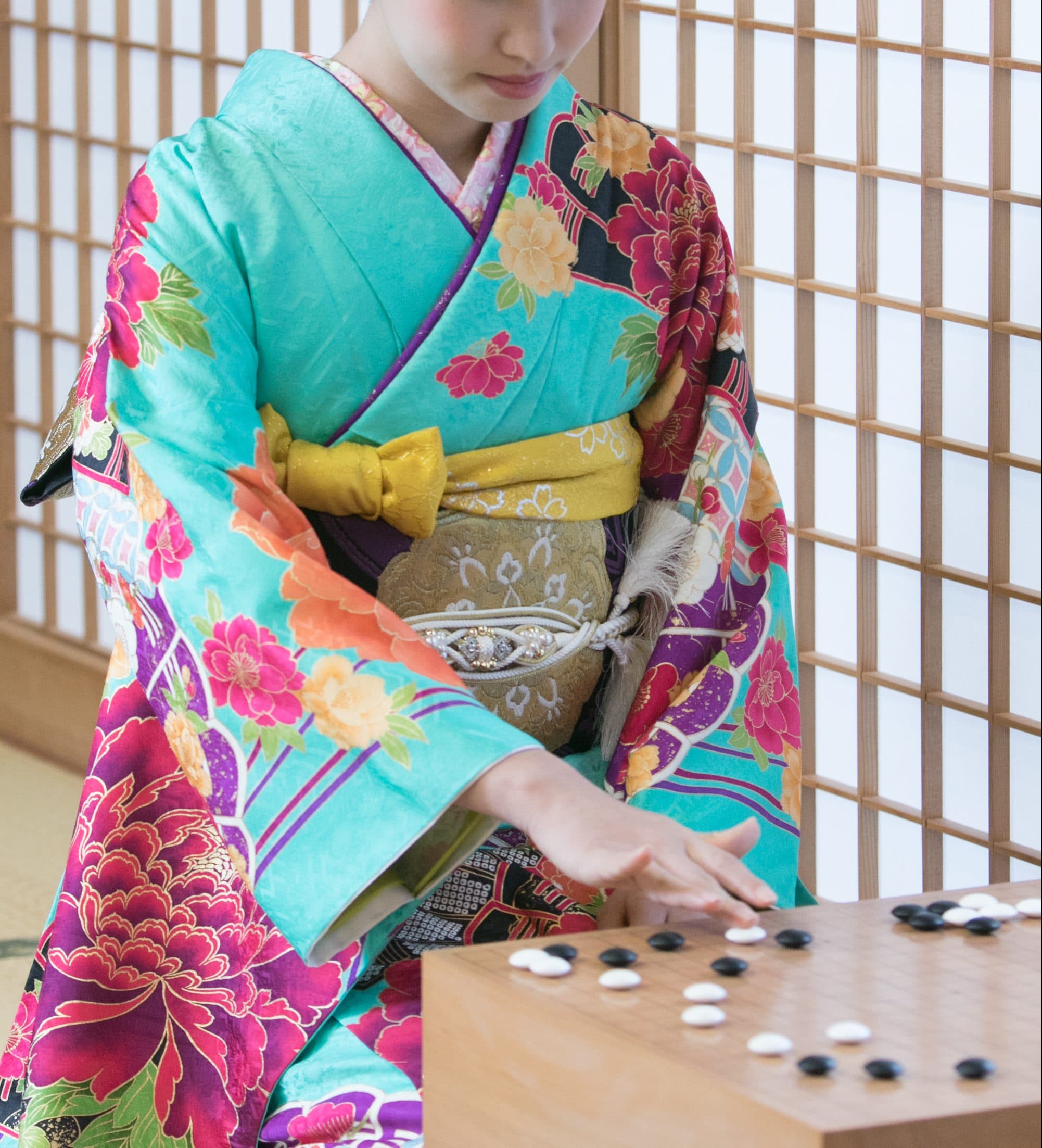Go is said to have started in China 4000 years ago. However, as there are also theories of it originating in India and Tibet, its exact origins are not clearly understood. According to information written in ancient Chinese texts (The Analects of Confucius, Mencius etc.), go spread during the Chunqiu period, or the Warring States period (770-220 B.C.) in China as a game simulating war strategy, politics, and humanity. When exactly go came to Japan is also not clearly known. There is one theory that the Japanese scholar, Kibi no Makibi, brought it back from China where he had travelled to as a Japanese envoy to the Tang Dynasty during the Nara period (710-794). However, as this conflicts with evidence written in both the Zuisho-wakoku-den (Chronicles of the Sui Dynasty), which states that the Japanese already had taken a liking to go in 636, as well as with the Taisho Code written in 701, go is thought to have come to Japan before the Nara period. Today, the community of devotees to the game of go has spread throughout the world. This year marks the 63rd European Go Congress and the 35th U.S. Go Congress, which are grand events held annually.
Utensils used in Go
Go is a one player vs. one player game. One player uses black stones, the other player uses white. The two players take turns placing their go stones onto the go board, and whoever is able to claim the most territory with their stones is the winner. White go stones are made from sea shells, and black stones are made from rock (there are also plastic and glass-made go stones). Wooden cases for storing go stones are called goke. Ishikawa Prefecture contains the company that boasts 60% share of all domestic goke production in Japan.
Go is also called “kido”

Go can also be called “kido” (“ki” can refer to either shogi or go) . Just like budo (martial arts), sado (tea ceremony), kado (flower arrangement), the grace and etiquette of kido as a handicraft has been respected since long ago.
Go begins and ends with “rei”, or ceremonial expressions of gratitude. Before the players begin the game, they say “Onegaishimasu” towards their opponent, and after the game has finished they say “Arigatou gozaimasu”.Once a player places a go stone, it cannot be moved. If a stone is moved, that player loses.Players must not make any noise each time they take a go stone from the goke. Go is a game in which play while being considerate of others. Players want to have fun playing go while being considerate of one another.There are specific ways to beautifully hold and place go stones. While you do not necessarily have to hold and place stones in this way, the beautiful method is to use your thumb and pointer finger (or middle finger) when taking out a go stone from the goke, transfer the stone to between your pointer finger and middle finger, and then to place the stone on the board with you finger pointed beautifully straight. You can judge the ability of your opponent based on whether or not they look like they are accustomed to this technique of holding and placing stones.
Source: Nihon Ki-in homepage, Ishikawa Monozukuri Production History and Production Inheritance (Ishikawa Prefecture)
This story was introduced at the 4th Japan Go Congress 2019 in Kanazawa held from July 12 to 15, 2019.



